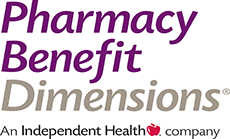On July 28, 2025, the Centers for Medicare & Medicaid Services (CMS) released Medicare Part D bid information (detailed instructions from CMS to plan sponsors outlining the requirements for them to submit their bids for approval by CMS to provide Part D drug coverage) for the 2026 plan year in preparation for the Medicare Open Enrollment period, which begins on October 15, 2025. Medicare Part D provides beneficiaries with coverage which helps pay for their prescription drugs. Private health insurance companies can contract with CMS to offer prescription drug plans (PDPs) or offer Medicare Advantage (MA) plans that include prescription drug coverage (MA-PDs). Before being modified through legislation in the Inflation Reduction Act (IRA), introduced in 2022, the Part D benefit included four phases (deductible phase, initial coverage phase, coverage gap also known as the “donut hole,” catastrophic phase). The IRA changed the Part D benefit phases by getting rid of the coverage gap phase and lowering the cost share amounts previously required by the Part D beneficiary and the amount paid by Medicare in the catastrophic phase, thereby shifting these additional prescription drug costs to the plan sponsor. In an effort to minimize the amount of the increased drug costs that are passed to the beneficiaries in the form of increased monthly premiums (monthly payments made by beneficiaries who are enrolled in Part D plans), the IRA included a cap of 6% to the base beneficiary premium (BBP).
Last year, in July 2024, as part of the annual CMS Part D bid information process, CMS announced a new nationwide voluntary three-year Part D Premium Stabilization Demonstration for PDPs (including Employer Group Waiver Plans or EGWP plans) which began in 2025. The goal of the program is to help stabilize Part D premiums as plans adjust to the changing environment and new legislation. For 2025, the three components of the program included a $15 reduction to the BBP, year-over-year premiums capped at $35, and narrowed risk corridors, which are cost ranges designed to share financial risk between Medicare and the plan sponsor. For 2026, the reduction to the BBP is being lowered to $10, year-over-year premiums are capped at $50, and CMS is discontinuing the narrowed risk corridors.






